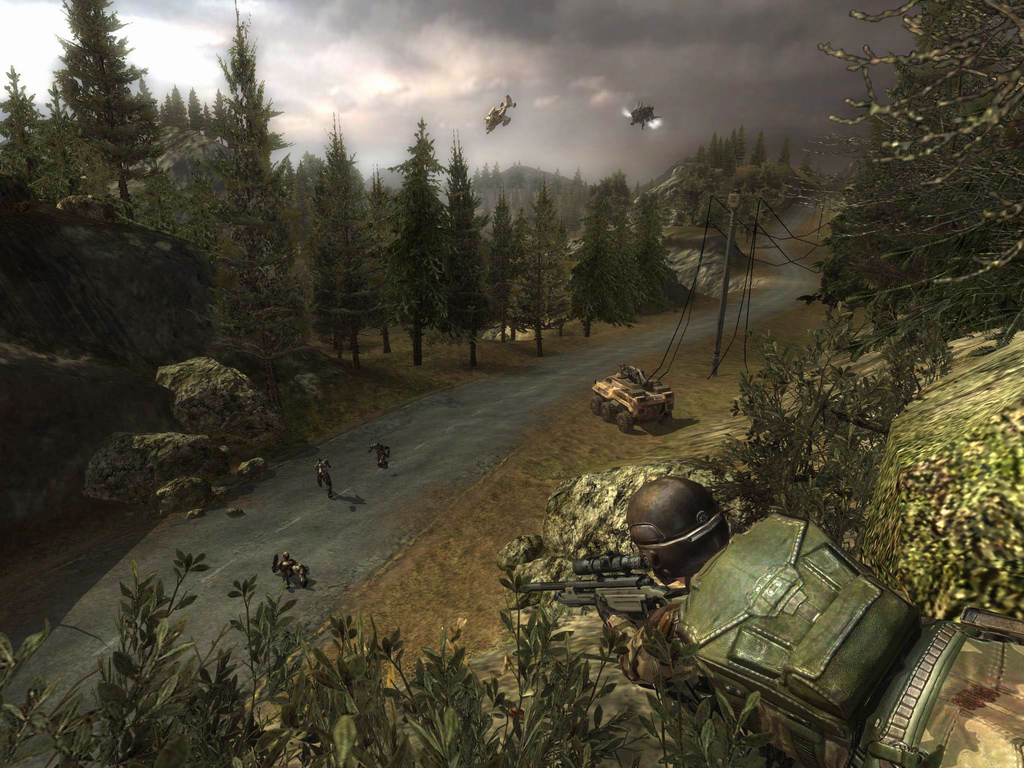Larrabee: Intel's New GPU
The Texture Units
As we said earlier, Larrabee doesn’t look much like a GPU, but while Intel was able to eliminate the setup engine and ROP by implementing those functions directly at the level of the Larrabee cores, the same isn’t true of the texture units. These units handle a very specific job that can be done much more efficiently in a dedicated unit. Texture decompression (DXTC), for example, is very simple to do in hardware, which is what guaranteed its success, but it requires enormous resources to do it on the software side. Intel calculated that performing texture operations on the processors would be between 12 and 40 times slower than on dedicated units, depending on the configuration (such as filtering quality and compressed or uncompressed texture format).
The texture units are fairly classic, and Intel doesn’t really provide a lot of detail about them, except that they will support all standard Direct3D 10 operations and compression modes. In fact, that’s the only point that might limit Larrabee’s ability to evolve. As we’ll see later, software entirely handles Larrabee’s rendering pipeline and so could address the future functionalities of Microsoft's application programming interface (API) via a simple update of the 3D engine executed by Larrabee’s cores. On the other hand, the texture units will be stuck at a certain level of functionality, which will determine that of the chip as a whole.
One interesting specificity of these texture units is that they handle translation of virtual addresses into physical addresses, which, in more concrete terms, means that there’s no longer a need to load an entire texture with its mipmap stack into local memory, as only the portions needed for display will be stored in the form of pages of a few kilobytes in size. If a page isn’t available in memory (a page fault), the texture unit notifies the processor, which then calls for it. This mechanism would make it very simple for programmers who aren’t afraid to get their hands dirty to implement, for example, an algorithm like id Software’s MegaTexturing.
Get Tom's Hardware's best news and in-depth reviews, straight to your inbox.
Current page: The Texture Units
Prev Page Fast Communication: The Ring Bus Next Page Larrabee Versus Cell-
thepinkpanther very interesting, i know nvidia cant settle for being the second best. As always its good for the consumer.Reply -
IzzyCraft Yes interesting, but intel already makes like 50% of every gpu i rather not see them take more market share and push nvidia and amd out although i doubt it unless they can make a real performer, which i have no doubt on paper they can but with drivers etc i doubt it.Reply -
Alien_959 Very interesting, finally some more information about Intel upcoming "GPU".Reply
But as I sad before here if the drivers aren't good, even the best hardware design is for nothing. I hope Intel invests more on to the software side of things and will be nice to have a third player. -
crisisavatar cool ill wait for windows 7 for my next build and hope to see some directx 11 and openGL3 support by then.Reply -
Stardude82 Maybe there is more than a little commonality with the Atom CPUs: in-order execution, hyper threading, low power/small foot print.Reply
Does the duo-core NV330 have the same sort of ring architecture? -
"Simultaneous Multithreading (SMT). This technology has just made a comeback in Intel architectures with the Core i7, and is built into the Larrabee processors."Reply
just thought i'd point out that with the current amd vs intel fight..if intel takes away the x86 licence amd will take its multithreading and ht tech back leaving intel without a cpu and a useless gpu -
liemfukliang Driver. If Intel made driver as bad as Intel Extreme than event if Intel can make faster and cheaper GPU it will be useless.Reply -
phantom93 Damn, hoped there would be some pictures :(. Looks interesting, I didn't read the full article but I hope it is cheaper so some of my friends with reg desktps can join in some Orginal Hardcore PC Gaming XD.Reply
